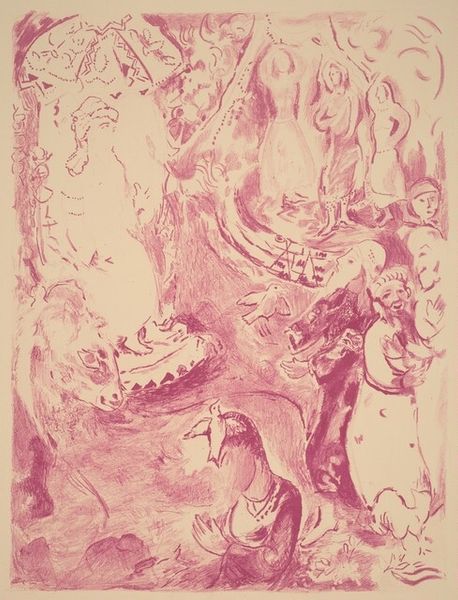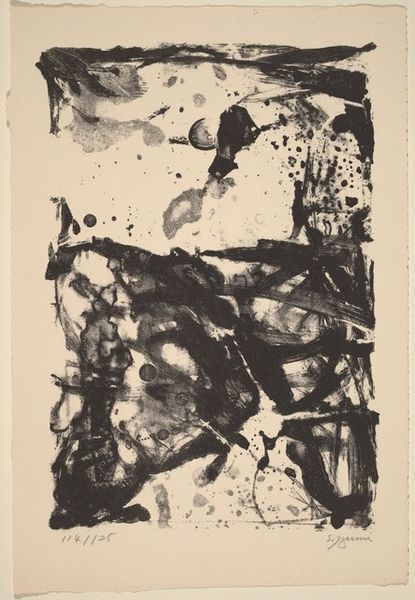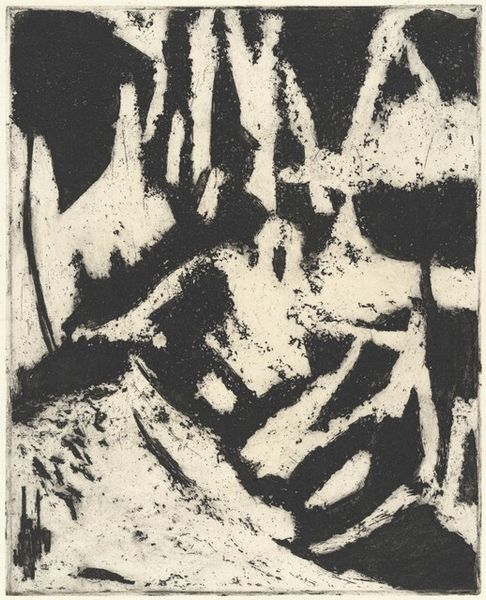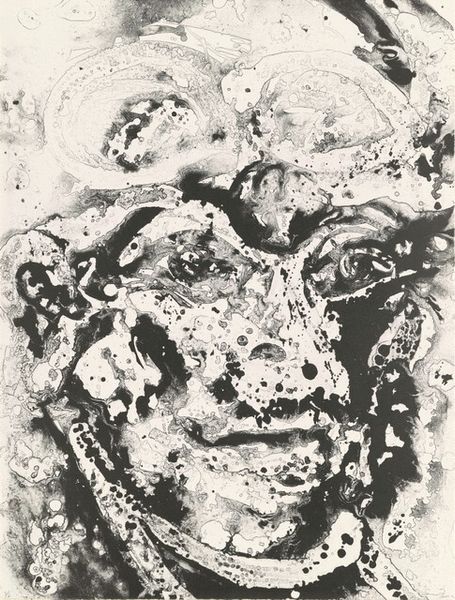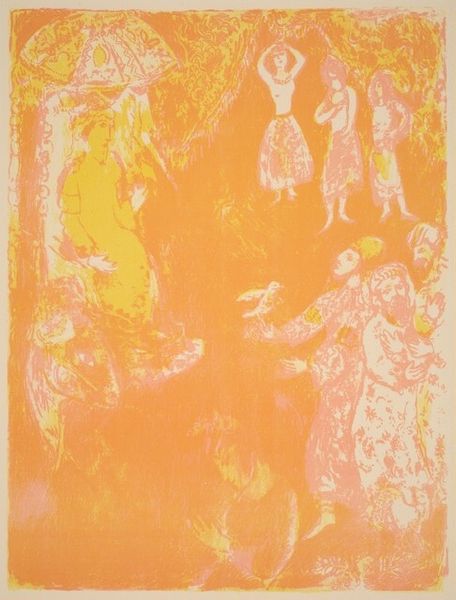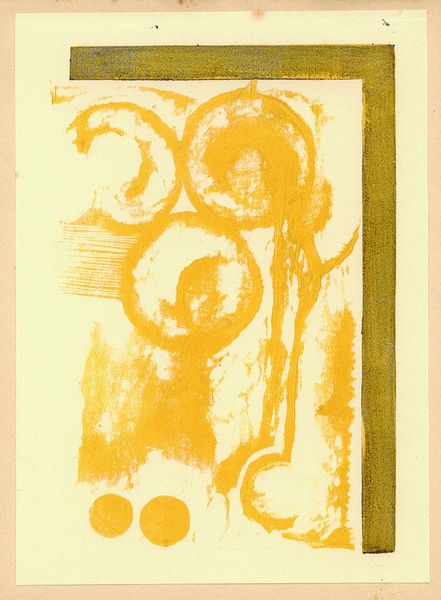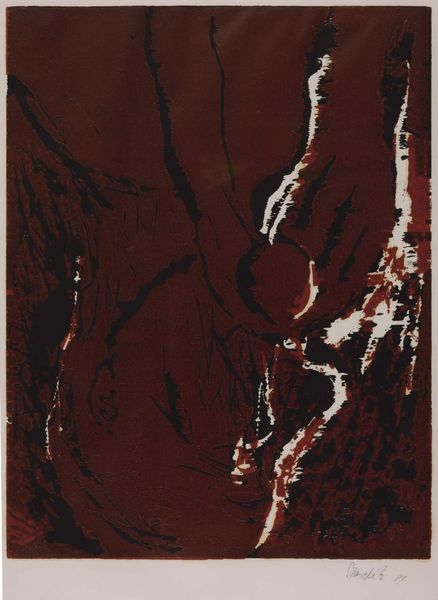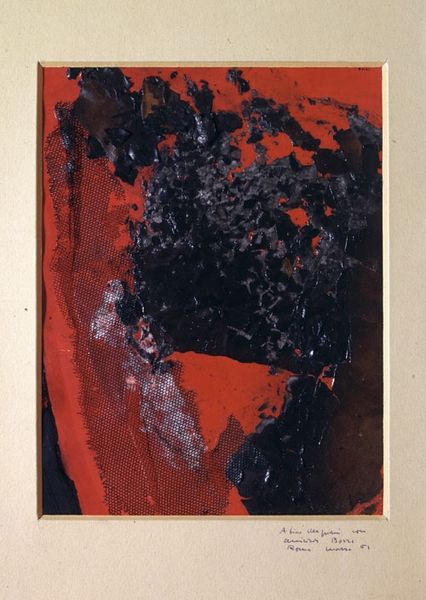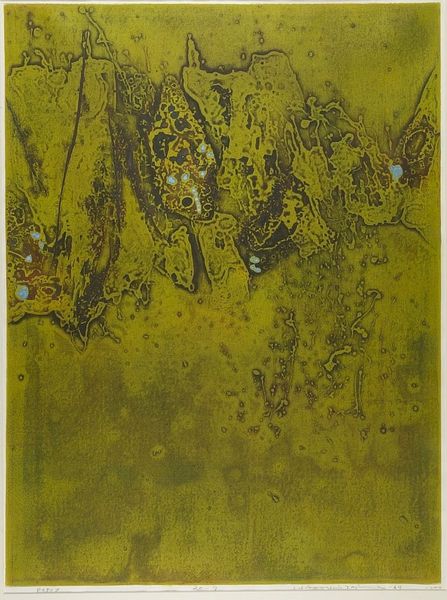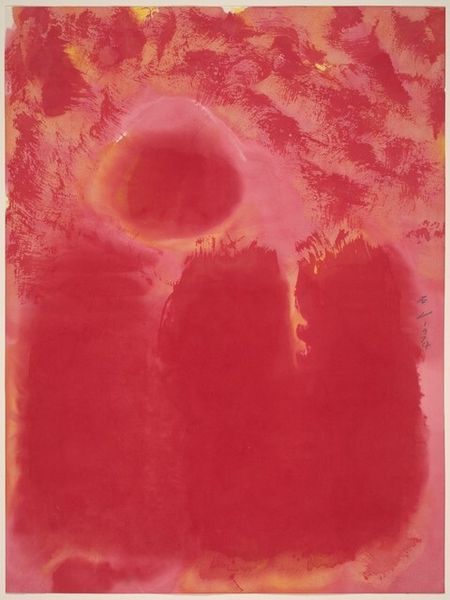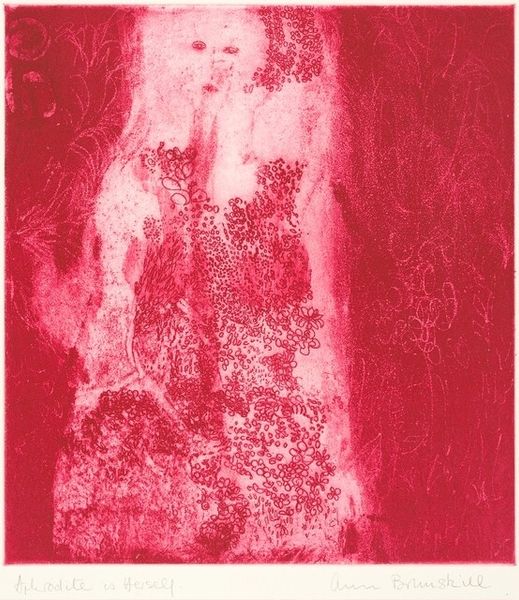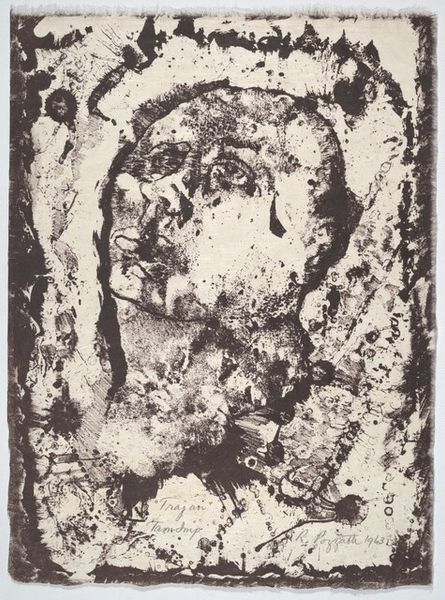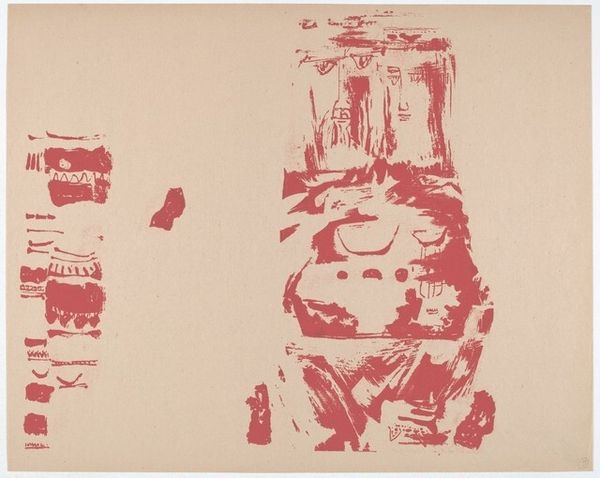
drawing, lithograph, print
#
drawing
#
narrative-art
#
ink painting
#
lithograph
# print
#
pencil sketch
#
figuration
#
line
#
modernism
Copyright: National Gallery of Art: CC0 1.0
Curator: It’s a bit like looking at a dreamscape, wouldn’t you say? This is Marc Chagall’s "The Tale of the Ebony Horse," a lithograph made sometime between 1945 and 1946. Editor: It's an intense wash of sanguine hues. A bit unsettling, almost like a half-remembered nightmare fighting its way back to the surface. Curator: Absolutely, there's a rawness to it. It’s rendered as a narrative art, seemingly telling a tale. I see a kind of beautiful chaos, don't you? The ebony horse itself is lurking down on the bottom left, tethered loosely by line. Editor: I notice the recurring motif of levitation—figures hovering, seemingly unbound by gravity. What narrative purpose do you think that serves here, beyond just being, well, Chagall-esque? Curator: Ah, to float free! Chagall often used levitation to express spiritual freedom, escaping earthly constraints. In this context, maybe it is showing us figures and beasts released, maybe delivered from fate by this Ebony Horse. Does it look this way to you? Editor: I am less certain about reading transcendence, although the idea is charming. Note how the line work isn’t particularly graceful, as his drawings often were, nor is it particularly skilled. The cross-hatching is chaotic, as if rendered in great haste and speed. This speaks to a potential interpretation— that of unrest. Curator: Yes, exactly. I see Chagall working rapidly as if trying to transcribe what is being revealed to him. He wasn't always technically precise— it was all about feeling for him. This way of creating really unlocks the artwork. When it works. Editor: And when it works. I see what you mean. What strikes me most are the visible layers—the erasures, the corrections. These ghost-like figures add a layer of complexity to the overall structure. Curator: They certainly do. So what, then, do we conclude here? Do we like it, finally? Editor: I wouldn’t say I “like” it. But I concede that I've come to better see how he translated, as you said, feeling into form. I appreciate, let us say, what Chagall tried to do. Curator: It is a raw moment caught in a print. We're witnesses.
Comments
No comments
Be the first to comment and join the conversation on the ultimate creative platform.
